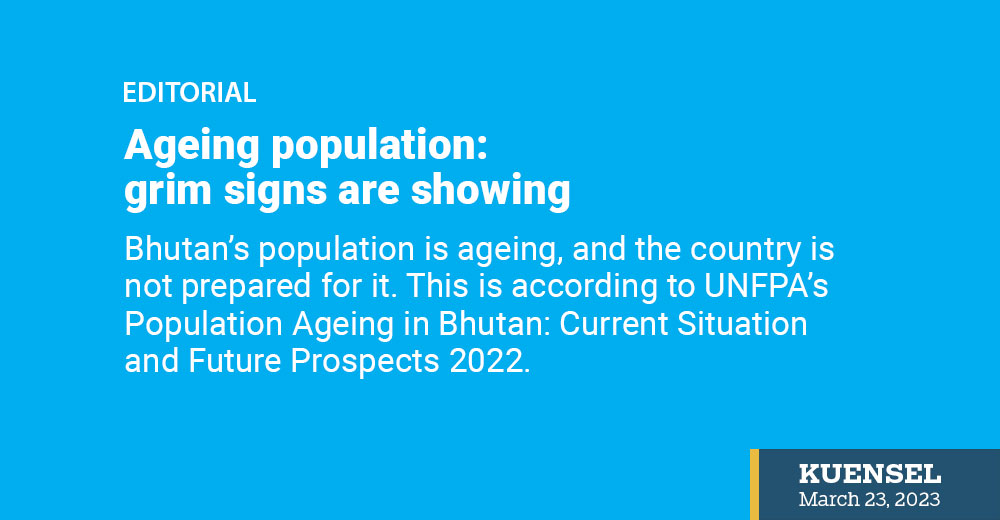Bhutan’s population is ageing, and the country is not prepared for it. This is according to UNFPA’s Population Ageing in Bhutan: Current Situation and Future Prospects 2022.
The report states that the proportion of people aged 65 and over in the country is expected to more than double. The number of older persons, which was at 50, 715 in 2022, is expected to reach 118,650 persons by 2047.
This is a significant shift, one that the country will need to address in order to maintain its development trajectory.
Bhutan has made great strides in recent years, with a focus on poverty reduction and improving access to education and health care. However, as the population ages, the country will need to focus on ensuring that its elderly population has access to the same opportunities.
One issue that the country will need to address is the availability of health care for the elderly. Currently, there is a lack of services available for the elderly, and most are left to fend for themselves. This is likely to change in the coming years, as the population ages, but more needs to be done to ensure that the elderly have access to the health care they need.
Another issue that the country will need to address is the lack of retirement benefits available to the elderly. This means the current retirement system will have to be made meaningful in the context of the reality facing the country and its ageing population. We need to ensure that the elderly have a retirement income that will allow them to live comfortably.
The repercussions of an ageing population are vast and varied. In terms of economic repercussions, an ageing population often means slower economic growth and a smaller workforce. This can lead to a decrease in the amount of tax revenue for the government, and can also put a strain on social welfare programmes.
An ageing population can also have an impact on the overall health of a country, as elderly people are more likely to need medical care. In terms of social repercussions, an ageing population can lead to a decrease in the number of people in the workforce, which can lead to a decline in the standard of living. An ageing population can also lead to a rise in the number of people living in poverty.
The grim signs are showing. Policy interventions are critically necessary.


